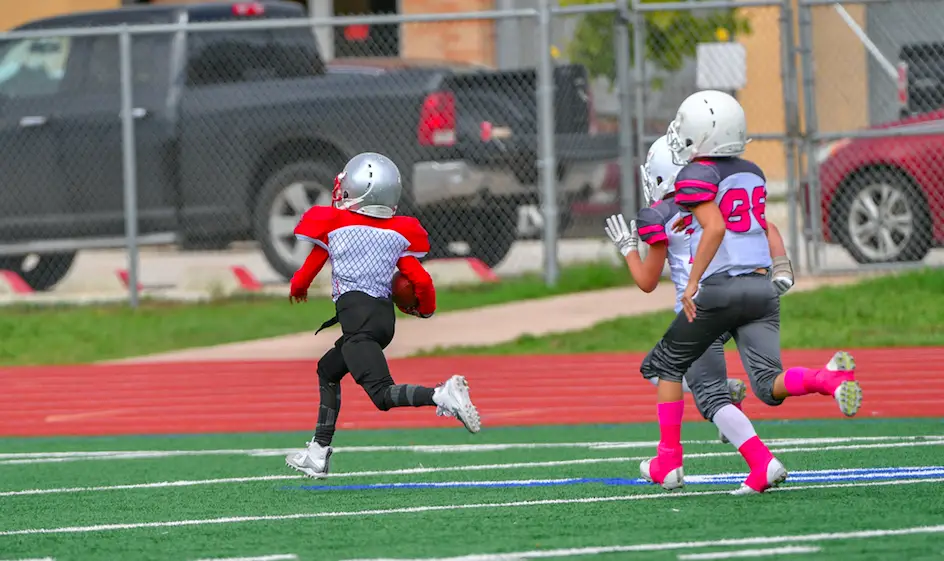A pick six in football occurs when the defensive team intercepts a pass and runs it all the way into the other teams end zone. This term was coined due to the six points that are earned from scoring a touchdown on the play.
What Is The Difference Between An Interception And A Pick Six?
The difference between these two plays is that a pick-six only occurs if a touchdown is scored on the interception return.
A regular interception simply means that the defense was able to catch a pass from the quarterback that was intended for his receiver.
The difference is the return after the interception, as only one of these two terms results in the defense scoring a touchdown.
Why Is An Interception Called A Pick?
An interception is referred to a pick because the opposing team is “picking” off a forward pass. When you hear the term “picked” in football in this context it is referring to taking something.
The term pick is not an official term and tends to be used as a slang word for an interception

How Did It Earn The Name?
The reason that this play is called a pick-six is for two reasons. First of the “picking” portion of the word refers to the use of this term in football which means interception.
The second half of the word comes from the six points scored on the play. You may be thinking a touchdown is seven points but this is term is only referring to the points prior to the extra point.
On this single play, the ball is picked off and six points are added to your team’s score. The additional points you see after a touchdown are referred to as PATs.
Who Has Returned The Most Pick Sixes?
Rod Woodson has returned the most interceptions for touchdowns with a total of 12 throughout his entire career. There are two players tied in second with 11 pick-sixes. Those players are Darren Sharper and Charles Woodson.
Who Has Thrown The Most?
The quarterback that has thrown the most pick-sixes in a career is Brett Favre with 41. Though the single-season record goes to Jameis Winston who threw 7 during his 30+ touchdown 30 interception season.
What Is A Pick Two?
A pick two is a much less common play that also involves an interception return. When attempting a two-point conversion the opposing team can still intercept the ball.
Since it wouldn’t be fair to allow the defensive team to score a touchdown on a two-point conversion they are awarded two points of their own if they make it to the opposing team’s endzone prior to being tackled.
For this reason, the term pick two was created. This represents an interception returned for a two-point conversion.
What Routes Result In Interceptions For Touchdowns?
An interception for returned for a touchdown can happen on any play but there are a few specific routes that often lead to this play happening.
Comeback Route
The comeback route can be a very effective play for a football team but there is always an element of danger.
In most cases, this route is going to be run on the outside of the field. It is an underneath route meaning the player will get open by being closer to the line of scrimmage than the defender.
This issue with this is if a defender breaks on the route and gets to the ball first he will be on his way to the endzone.
Breaking on a comeback route means the defender has all his momentum heading towards the opposing team’s endzone. And since the receiver is at a standstill it will be almost impossible to catch him.
Out Route
An out route is another receiving pattern that can result in an interception returned for a touchdown.
This route is also dangerous for a similar reason to the comeback route. The shape of the receiving pattern means that if a defender picks it off they will already be travelling at a high speed towards the endzone.
Additionally, since these routes are run towards the sideline the interception will likely take place near the boundary.
This is an issue because there are going to be very few offensive players in the area to make the tackle.
This ultimately makes the chance of a touchdown via interception return much higher on out routes.

